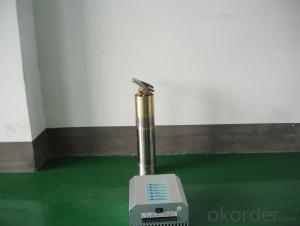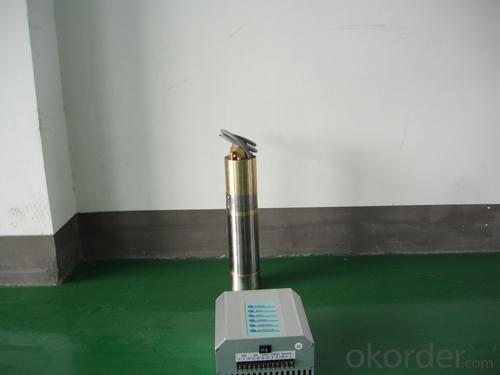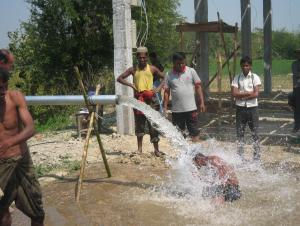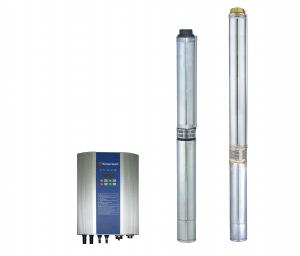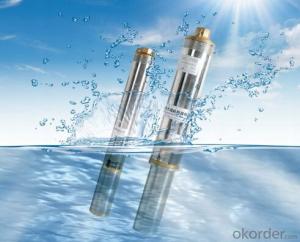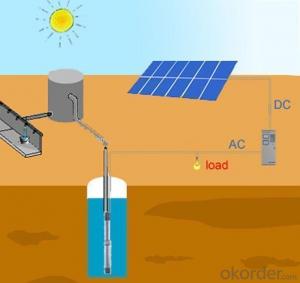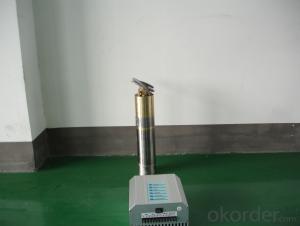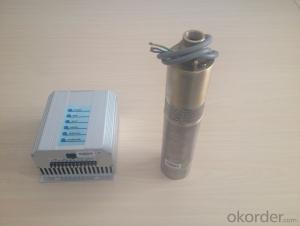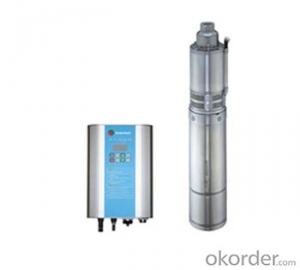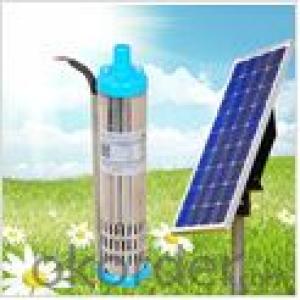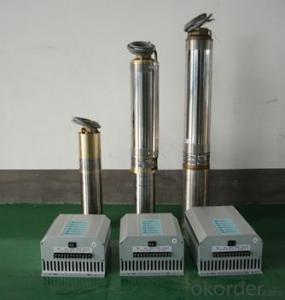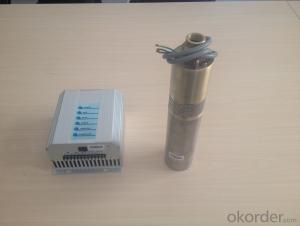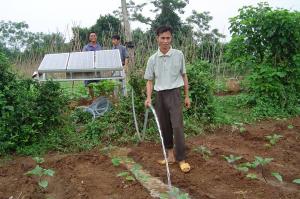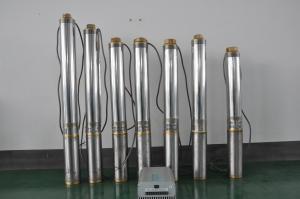Solar Pump Home Depot DC Submersible Pumps
- Loading Port:
- China Main Port
- Payment Terms:
- TT OR LC
- Min Order Qty:
- -
- Supply Capability:
- -
OKorder Service Pledge
OKorder Financial Service
You Might Also Like
Item Description :
This superb new addition to our solar fountain range comes with a 10w solar panel,and a powerful fountain pump that is capable of producing fountains of up to 2m in height. As well as being easy to set up and use.Instruction manual is supplied for assembly and maintenance.
Solar Fountain Key Features :
Powered by direct sunlight
No high voltage electric mains required
Safe for children
Max. height of fountain: 2M
Max. flow capacity: 800 L/H(176 GAL)
10W Polycrystalline solar panel included
18V DC brushless pump
Solar Pump Features :
Can produce fountains up to : 2M (tube height) 1.4M (fountain height)
Comes with multiple nozzle accessories
Cable Length : 5M
Solar Panel Features :
10W peak power.
Polycrystalline highly efficient solar panel
Comes mounted in aluminium frame
Comes with ground stake and rotating knob so you can angle your panel toward the sun
What You Will Get :
10W solar panel
Solar pump
Ground Sake
Nozzle accessories
Precautions :
DO NOT alter or change the product itself or its components
Operate pump in freshwater only, never above 50 degrees celsius
Keep away from flammable liquids
Do not connect to any other power supply other than the included
- Q: Can solar pumps be used in conjunction with other renewable energy sources?
- Yes, solar pumps can be used in conjunction with other renewable energy sources. By integrating solar pumps with sources like wind turbines or hydroelectric power, it is possible to create hybrid systems that maximize energy generation and ensure a reliable water supply. This combination of renewable energy sources enhances the overall efficiency and sustainability of the pumping system.
- Q: How does the efficiency of a solar pump change over time?
- The efficiency of a solar pump tends to remain relatively constant over time, as long as the system is well-maintained and properly installed. However, over an extended period, the efficiency may decrease slightly due to normal wear and tear of the components, such as the solar panels or the pump motor. Regular maintenance and timely replacements can help maintain the efficiency of the solar pump over its lifespan.
- Q: Can a solar pump be used for water supply in off-grid schools?
- Water supply in off-grid schools can be achieved through the use of solar pumps. These pumps are an excellent choice for locations without access to the grid, as they rely on solar energy to function and do not require electricity from the grid. This makes them a sustainable and cost-effective solution for areas where electricity is not readily available. Solar pumps can be used to extract water from wells, boreholes, or other water sources. They can transport the water to storage tanks or directly to the school's water distribution system. They are particularly suitable for off-grid schools because they can operate independently without the need for complex and expensive infrastructure. Another advantage of solar pumps is that they are environmentally friendly. They do not need fuel and do not emit greenhouse gases during operation. They also require minimal maintenance and have a long lifespan, making them a reliable and sustainable option for water supply in off-grid schools. Additionally, solar pumps can be equipped with battery storage systems. This allows them to continue operating even on cloudy days or during the night, ensuring a continuous water supply to the school regardless of weather conditions or time of day. In conclusion, solar pumps are a viable and efficient choice for water supply in off-grid schools. They provide a sustainable, cost-effective, and reliable solution, ensuring access to clean water for students and staff in remote areas.
- Q: Can a solar pump be used in areas with limited access to backup battery systems?
- Yes, a solar pump can be used in areas with limited access to backup battery systems. Solar pumps are designed to operate directly on solar power, eliminating the need for backup batteries. They can efficiently convert sunlight into energy to power the pump, making them ideal for remote locations or areas with limited access to electricity or backup battery systems.
- Q: How does the performance of a solar pump vary with different solar panel orientations?
- The performance of a solar pump can be influenced by different solar panel orientations due to various factors. To begin with, the amount of sunlight received throughout the day is determined by the orientation of the solar panels. Solar panels achieve maximum efficiency when they directly face the sun, enabling them to capture the highest amount of solar energy. Consequently, panels that align perfectly with the sun's path will generate the greatest amount of electricity, resulting in optimal performance for the solar pump. Additionally, the tilt angle of the solar panels plays a significant role in their performance. The tilt angle determines how effectively the panels can capture sunlight at different times of the day and throughout the year. Generally, an optimal tilt angle is one that corresponds to the latitude of the installation location, as it allows for maximum exposure to the sun's rays. Moreover, the direction in which the solar panels face can impact their performance. In the northern hemisphere, panels facing south tend to produce the highest amount of electricity, while in the southern hemisphere, panels facing north are typically more efficient. This is because the panels are oriented towards the sun's path and can capture sunlight for longer durations during the day. It is important to note that the performance of a solar pump is directly reliant on the electricity generated by the solar panels. Any variation in solar panel orientation can affect the amount of energy produced, which subsequently impacts the operational efficiency of the pump. Therefore, selecting the optimal solar panel orientation is essential for maximizing the performance of a solar pump and ensuring its reliable operation.
- Q: Are there any size limitations for a solar pump system?
- Solar pump systems do not typically have specific size limitations. The size of a solar pump system can vary depending on the specific application and requirements. Solar pump systems can be tailored to meet a wide range of needs, ranging from small residential systems to large agricultural or industrial applications. The size of the solar pump system will be influenced by factors such as the desired flow rate, the total head (vertical distance) the pump needs to overcome, and the available solar energy resources in the location. Generally, larger systems will necessitate more solar panels and storage capacity to ensure consistent operation, whereas smaller systems can be designed with fewer panels and storage capacity. Ultimately, the size of a solar pump system is determined by the specific needs and limitations of the project.
- Q: Can a solar pump be used in areas with limited access to financing options?
- Yes, a solar pump can be used in areas with limited access to financing options. Solar pumps are a cost-effective and sustainable alternative to traditional pumps that require electricity or fuel. Since solar pumps use the sun's energy to operate, they eliminate the need for ongoing operational costs. Additionally, there are various organizations and initiatives that provide support and funding for renewable energy projects, including solar pumps, in underserved areas. These options can help overcome financial barriers and make solar pumps accessible to communities with limited financing options.
- Q: Can a solar pump be used for water supply in off-grid hospitals?
- Water supply in off-grid hospitals can be achieved using a solar pump. These pumps are an ideal solution for remote locations where access to electricity is limited or unreliable. By harnessing energy from the sun and converting it into electrical power, solar pumps are able to operate effectively. The use of solar pumps in off-grid hospitals offers numerous benefits. They provide a sustainable and cost-effective water supply solution, eliminating the need for diesel generators or grid connection. This not only reduces operational costs but also minimizes the environmental impact. Moreover, solar pumps require minimal maintenance and have a long lifespan, ensuring their reliability and durability in off-grid hospital settings. Additionally, solar pumps can meet the specific water requirements of hospitals, including drinking water, sanitation, and medical equipment sterilization. They can be easily integrated with storage tanks or water treatment systems, guaranteeing a continuous and dependable water supply. To sum up, solar pumps are a practical and efficient choice for off-grid hospitals, delivering a sustainable and reliable solution that caters to the unique needs of healthcare facilities, even in remote areas.
- Q: How does a solar pump handle water source contamination from radioactive materials?
- A solar pump does not have the capability to directly handle water source contamination from radioactive materials. However, it can be used in conjunction with appropriate water treatment systems that are specifically designed to handle radioactive contamination. These treatment systems can help remove or reduce the presence of radioactive materials in the water, making it safe for use.
- Q: Can a solar pump be used for water supply in remote agricultural farms?
- Yes, a solar pump can be used for water supply in remote agricultural farms. Solar pumps are an efficient and sustainable solution for providing water to remote areas where electricity access is limited. They can draw water from wells, rivers, or lakes using solar energy, making them an ideal choice for off-grid agricultural farms. Additionally, solar pumps require minimal maintenance and have a long lifespan, making them a cost-effective and reliable option for remote water supply in agricultural settings.
Send your message to us
Solar Pump Home Depot DC Submersible Pumps
- Loading Port:
- China Main Port
- Payment Terms:
- TT OR LC
- Min Order Qty:
- -
- Supply Capability:
- -
OKorder Service Pledge
OKorder Financial Service
Similar products
Hot products
Hot Searches
Related keywords
